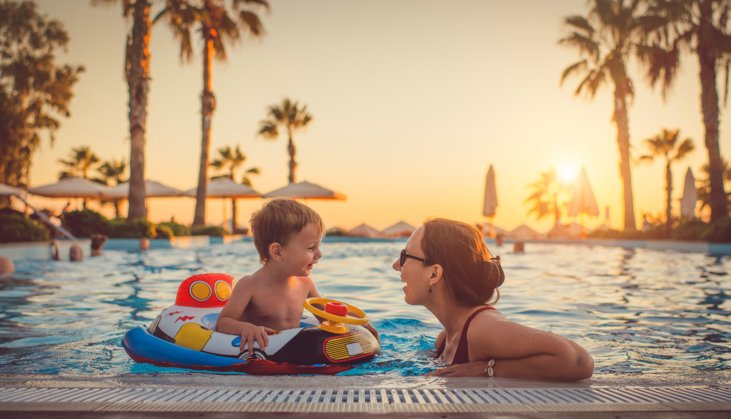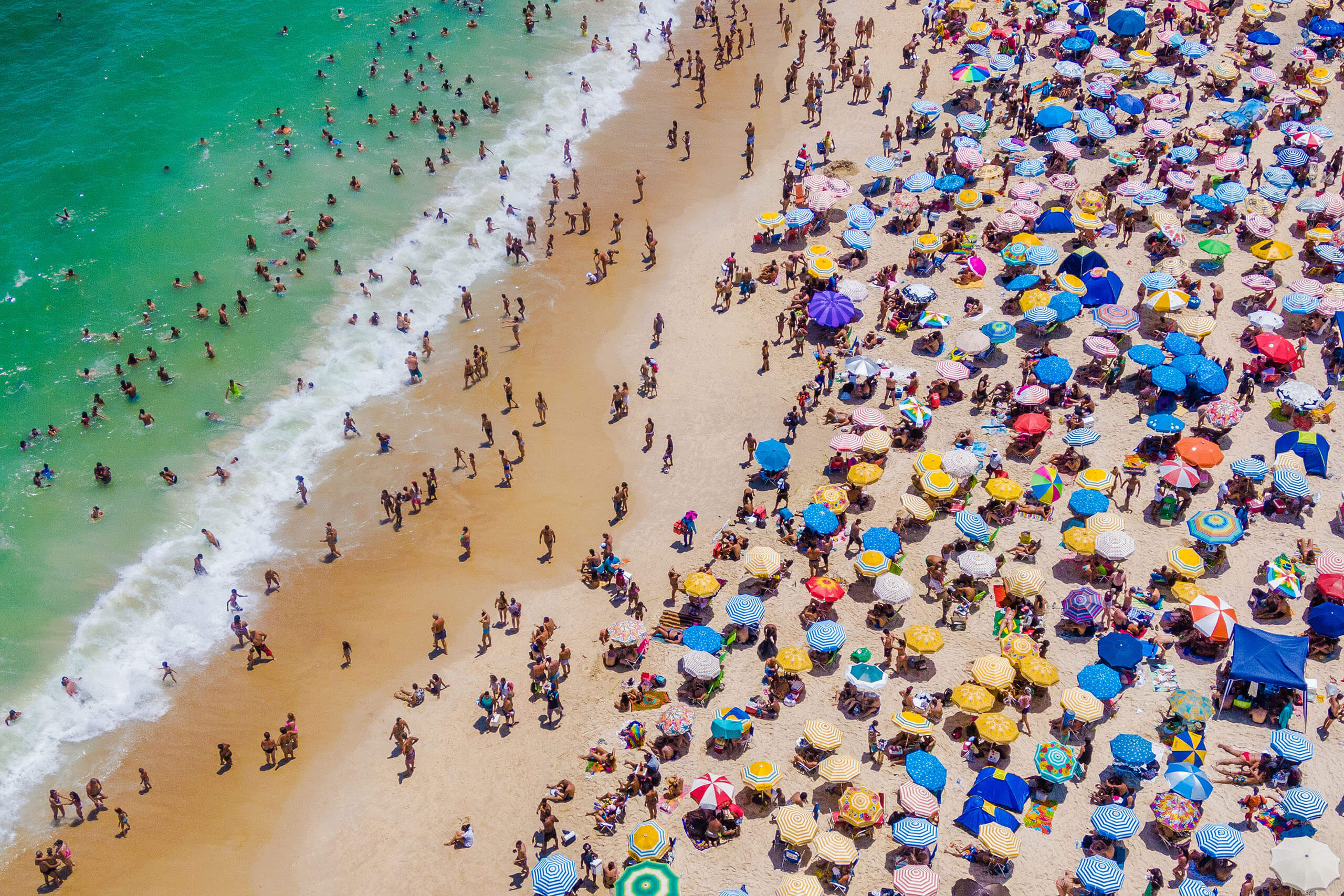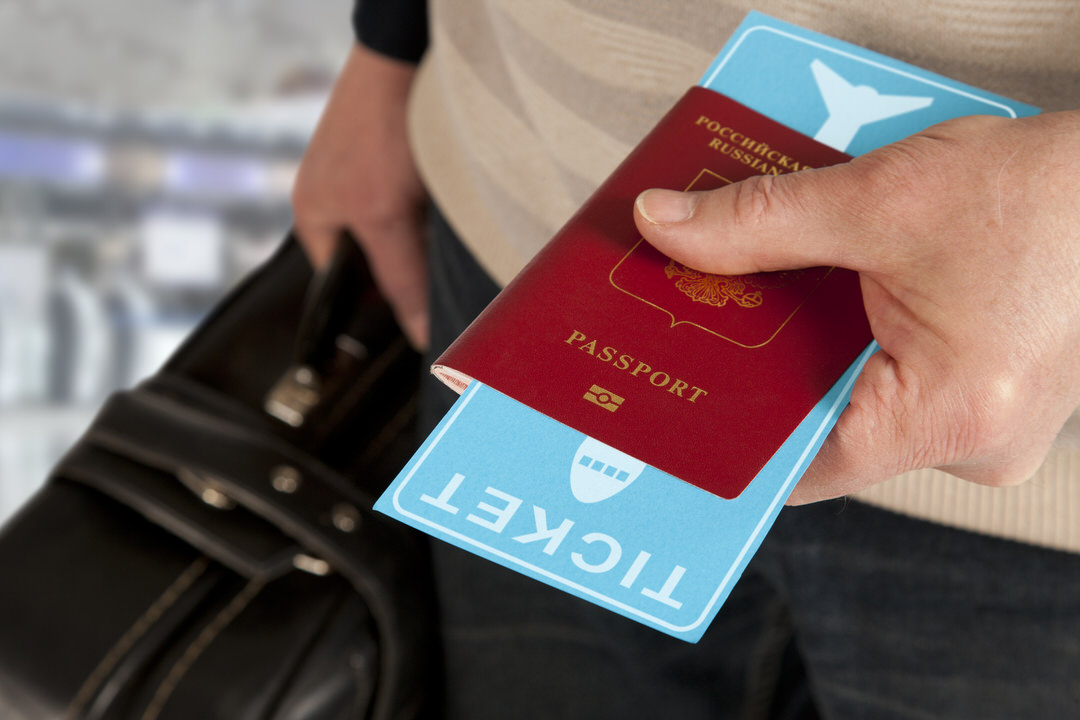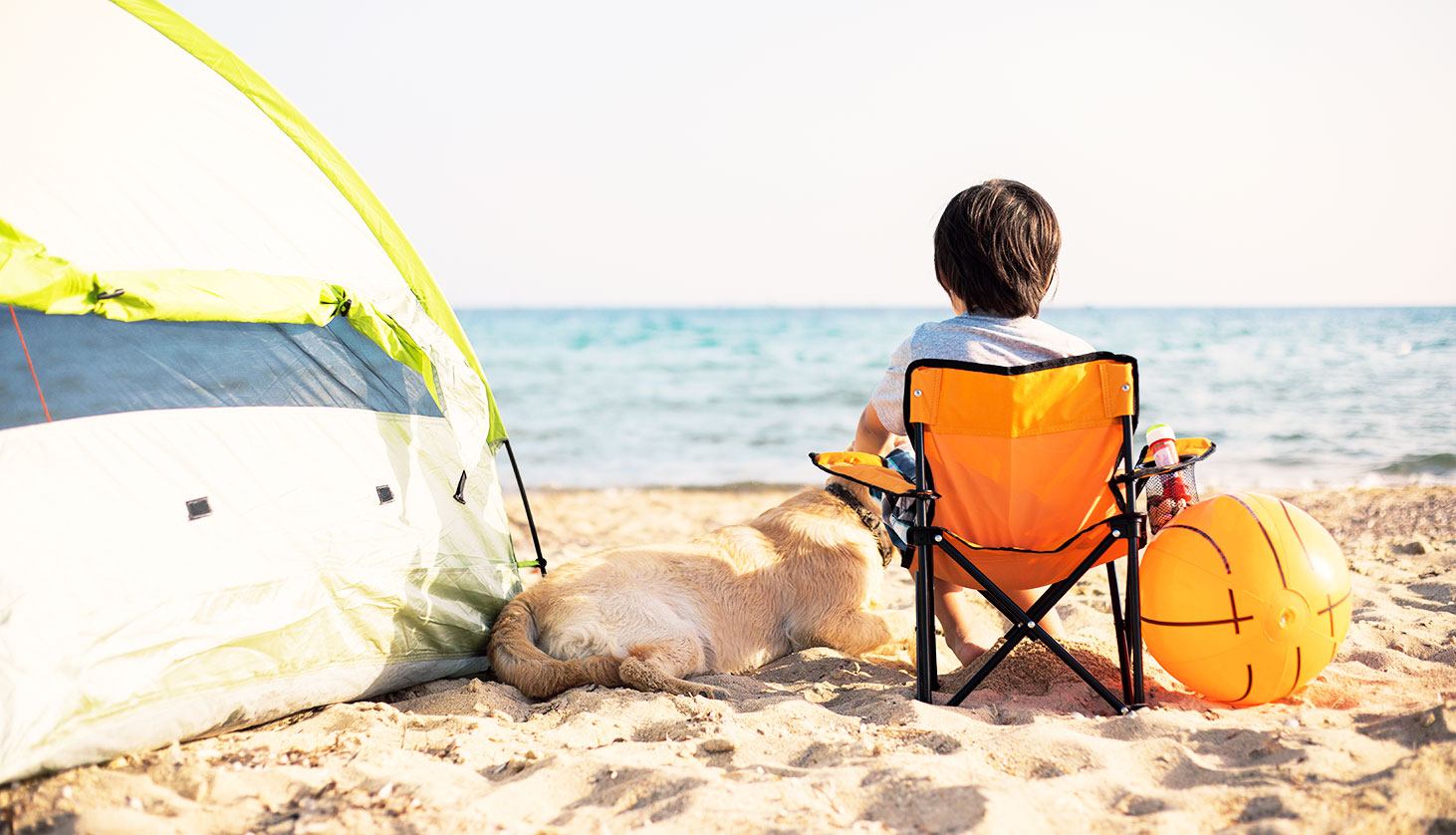As summer approaches and the warm sunshine beckons you outside, you’ll likely be in search of fun family activities for all ages.
Spending a day at the beach is a great way to stay active, have fun and make happy memories. It’s the epitome of summertime.
Unfortunately, no swim day is without its risks. Whether you’re at a sandy beach or a refreshing pool, there are things you can do — both proactively and, currently, to ensure all swimmers stay safe. The key is to make safety an ongoing topic of communication with your family, not a one-and-done conversation.
Table of Contents
Water Safety: How to Prepare
Before heading out for a vacation full of fun in the sun, make sure everyone knows how to stay safe and exactly what to do in case of an emergency. Once kids are empowered with safety knowledge and preparedness skills, your whole family can enjoy worry-free water fun.
Drowning Statistics and Facts
Be aware of the prevalence and risk factors of drowning so that you can recognize unsafe situations and help keep swimmers of all ages safe. Below are some key drowning statistics to know this summer:
- Drowning is the 3rd most common cause of accidental injury death. (source)
- There are approximately 10 drowning deaths in the U.S. every day. (source)
- Males, children and those with more access to water have the highest risk of drowning. (source)
- About 20% of drowning deaths occur in children ages 14 and younger. (source)
- Formal swimming lessons can reduce the risk of drowning by 88% in children ages 1–4. (source)
- 91% of drowning victims who receive CPR survive. (source)
- Lifeguards make approximately 1 million rescues every year. (source)
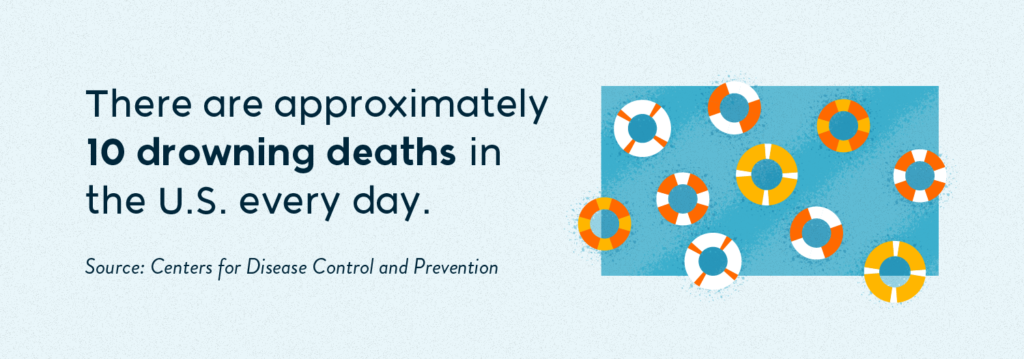
Steps to Take Before You Leave
Make a simple checklist of action items while planning your vacation. Top priority to-dos include becoming CPR-certified (or bringing someone who is), enrolling your kids in swimming lessons and chatting with all members of your group about the importance of safety.
CPR and Swimming Lessons
Perhaps the most paramount part of safety preparedness is thorough education and official certification. That’s why cardio-pulmonary resuscitation (CPR) and swimming lessons are the best defense against drowning.
Dialing 911 should be your first instinct in an emergency, but some situations require immediate action. If someone is unconscious, not responding or not breathing, performing CPR can save their lives.
The first step in obtaining a CPR certification is finding a class online or at a local hospital or community center. Your certification will be valid for two years. In between certifications, take online refresher courses to stay prepared.
The best way to keep your children safe in the water is to teach them to be strong swimmers from an early age. Be proactive about water safety and enroll family members of all ages in swimming lessons.
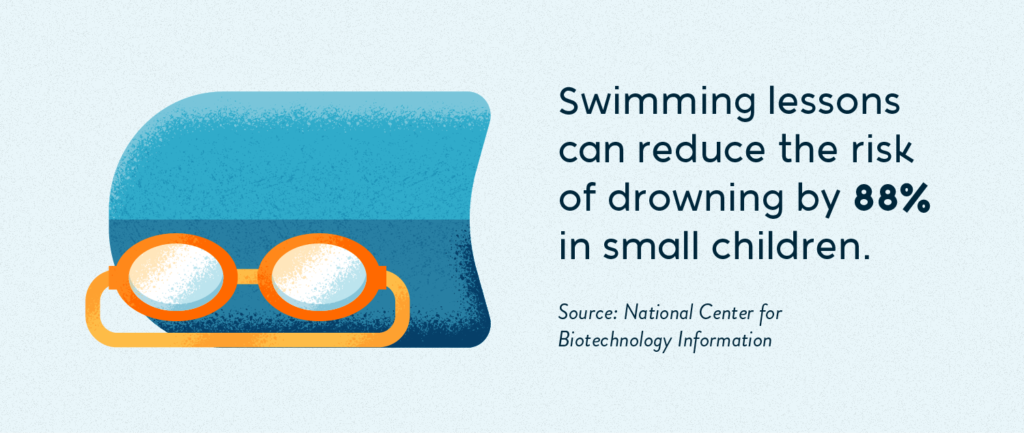
When deciding which swimming program is best for your child, watch their first lesson to determine the quality of attention and level of activity your child receives from the teacher. Consider the following factors:
- Credibility: Are the instructors qualified and experienced?
- Safety: Are there certified lifeguards on duty?
- Variety: Are your children learning swimming techniques as well as general water safety best practices?
Raising your children to be strong swimmers will give you peace of mind that their risk of drowning is greatly reduced. The next step in water safety is talking with your children about identifying and reducing water-related hazards.
Talk With Your Children About Water Safety
Before every water-related outing, take five minutes to huddle with your family. Make sure everyone’s on the same page with how to avoid accidents and what to do in an emergency.
Even small children are able to understand the importance of safety. Discuss with your kids the importance of never swimming without an adult present and how they should immediately come to you if anyone gets hurt. It’s never too early to start talking to your family about things you can all do to ensure everyone has a great time and stays safe.
While it’s necessary to discuss real dangers, the last thing you want to do is make your child feel helpless or afraid. Aim to strike a balance between serious, clear communication and keeping things fun. After all, that’s what swimming is all about! The best thing you can do as their parent or guardian is educate, empower and encourage your kids.
- Educate them with the awareness of what could go wrong and hazards to be aware of.
- Empower them with safety precautions and a preparedness plan.
- Encourage them by emphasizing that these dangers are rare and often easily avoidable.
Constant supervision is the foundation of water safety. There’s no substitute for the attention of a parent or trusted adult family member or friend. That said, always check to see if there’s a lifeguard on duty to provide an extra set of eyes.
Lifeguards
Lifeguards are a crucial part of enforcing water safety and preventing drowning. One of the main ways your family can stay safe is to respect and obey lifeguards. However, it’s important to remember that lifeguards aren’t babysitters, and they’re not a replacement for your supervision, as they’re likely watching a lot of people at once. They’re also not out to ruin your fun. When they tell you or your kid to stop doing something, it’s because they’ve been trained to recognize unsafe behaviors that lead to accidents.
Your kids will look to you as a role model and an example of respectful communication. Avoid snapping back at a lifeguard or complaining about stringent safety rules. You’re all on the same team with the same goal — safety first.
Talk With Your Spouse or Partner About Water Safety
If you’re traveling with children, it’s best to bring a friend, partner or spouse for an additional pair of eyes. Before every swim session, discuss who will be the “water watcher.” This designated person is responsible for constant supervision and should avoid any distractions or impairments, including:
- Drinking alcohol
- Scrolling on social media
- Reading
- Listening to music with headphones
While the water watcher is solely responsible for supervision — view them as an unofficial lifeguard — every adult should keep eyes on children to ensure safety.
Forming a Preparedness Plan
In the rare event that there’s an emergency, having a preparedness plan that you’ve created beforehand will help you act swiftly and decisively in the moment. Include the following water safety measures in your preparedness plan:
- Always have a charged phone on hand in case you need to dial emergency services.
- Avoid remote areas that you know have spotty cell phone service.
- Before going out, check the weather. If storms are in the forecast, postpone the outing.
- Be aware of nearby medical facilities to ensure swift access to care if needed.
- If there’s an emergency, always call 911.
- If necessary, ask if anyone is CPR certified.
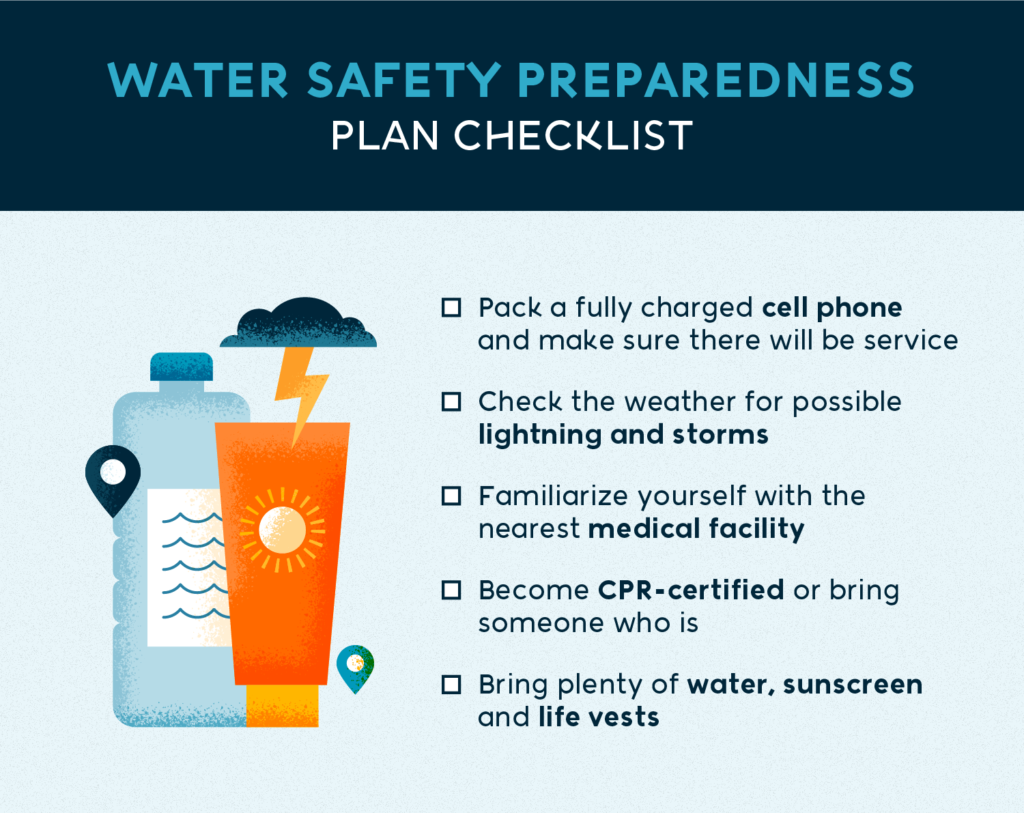
Water Safety: While on Vacation
You’ve done a lot of prep work, and now it’s time to enjoy your vacation! There are a few things to keep in mind during your trip, including spotting potential water-related dangers and using the proper safety gear.
Potential Hazards to Identify
From drowning to jellyfish stings, there are a lot of hazards present in pools and on beaches. Awareness is key to spotting dangerous situations and avoiding them before they become emergencies.
Pool Hazards
Pools are often preferred by parents of young children due to their controlled environment. Most — if not all — pool-related accidents can be prevented with proper safety knowledge. The following are the most common hazardous behaviors in a pool setting:
- Running on slippery decks increases the likelihood of injury by falling.
- Diving in shallow waters may result in injury to the head or spine.
- Roughhousing can lead to injury and drowning.
- Forgetting to rest may trigger exhaustion and increase the risk of drowning.
You should also make sure there’s a fence or other barrier surrounding the pool so that toddlers can’t fall in. As an added precaution, be aware of neighbors’ pools or any pools at your hotel or apartment building and make sure access to those are also blocked.
Beach Hazards
Beaches offer beautiful scenery and sandy fun that simply can’t be replicated at a pool. However, these added benefits come with some extra things to be aware of:
- Rip currents and undertows can suck swimmers underwater and away from the shore. They can be difficult to combat, even for strong swimmers. If you’re caught in a rip current, stay calm and swim parallel to the shore until you’re out of the current.
- Pollution is a growing and unfortunate crisis plaguing our oceans. Many items that don’t belong in the ocean litter shorelines and pose threats to barefooted beachgoers. Always watch where you’re walking and be aware of sharp objects and debris.
- Marine life such as algal blooms, jellyfish and sharks can all pose threats to safety. While rare — there is only one shark-related fatality every two years in the U.S. — dangerous marine life is something to keep on your radar.
Look for signs or flags that indicate dangerous water conditions and avoid swimming in these areas. Keep in mind that the absence of a sign or flag indicating danger doesn’t mean conditions are safe, so always practice caution and use your best judgement when swimming in the ocean. Below are common warning flags and what they mean according to the Florida Department of Environmental Protection.
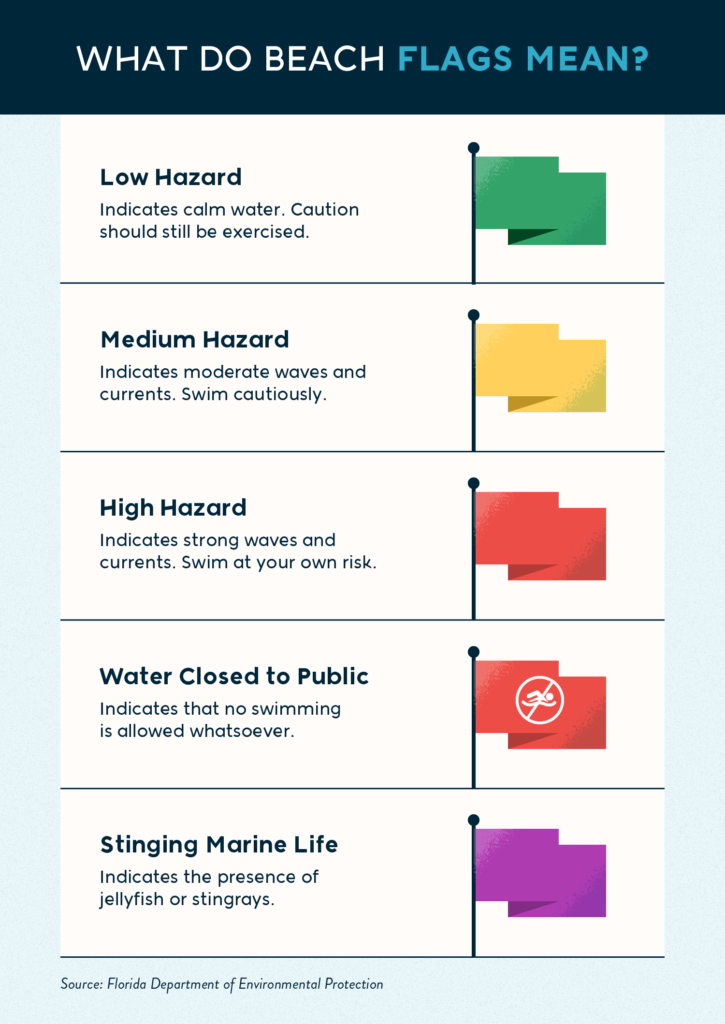
Boating Hazards
Each year, approximately 332 people die from drowning in boating-related incidents. If your summer plans include boating, make sure to keep the following things on your radar:
- Maintain a safe speed and don’t overload your boat. Despite the fact that there usually aren’t speed limits on water, you may still receive a citation for reckless driving.
- For optimum alertness, avoid alcohol and assign a lookout passenger to help you spot oncoming boats, low water areas and submerged objects.
- Ensure everyone is wearing a life jacket and other necessary safety gear.
Safety Gear Dos and Don’ts
You can’t put a price on a life. The right safety gear is worth the investment — and in many cases, it’s mandated by law.
Flotation Devices
Just because your child has a flotation device doesn’t mean they’re drown-proof. Small children can easily slide off of inflatables and pool noodles. For optimal safety, ensure your child has a Coast Guard-approved personal flotation device (PFD).
If your water adventures include boating, you’ll need to abide by your state’s PFD laws. Typically, life vests are mandatory for children under a certain age. In states that have no laws, the Coast Guard requires a PFD for children under 13. Find your state’s requirements here.
Ultimately, these laws provide minimum age requirements, and it’s up to the parent’s discretion to continue to have their child wear a life vest — even if the law doesn’t require it.
Other Safety Gear
Once you’ve chosen the appropriate flotation device for your children, consider some extra safety gear:
- Goggles prevent saltwater and chlorine from irritating sensitive eyes. They’re also important for preventing contact lenses from falling out and being lost.
- Ear plugs help prevent ear infections and swimmer’s ear. Make sure you find ones that fit properly and are meant for water use rather than the foam kind used for noise control.
- Swim diapers can help delay the spread of germs and should be checked regularly. If your child is sick with digestive issues, don’t allow them in the water.
- Whistles are a cost-effective way for your child to signal for help in open water. The shrill noise can cut through noise caused by waves and crowds.
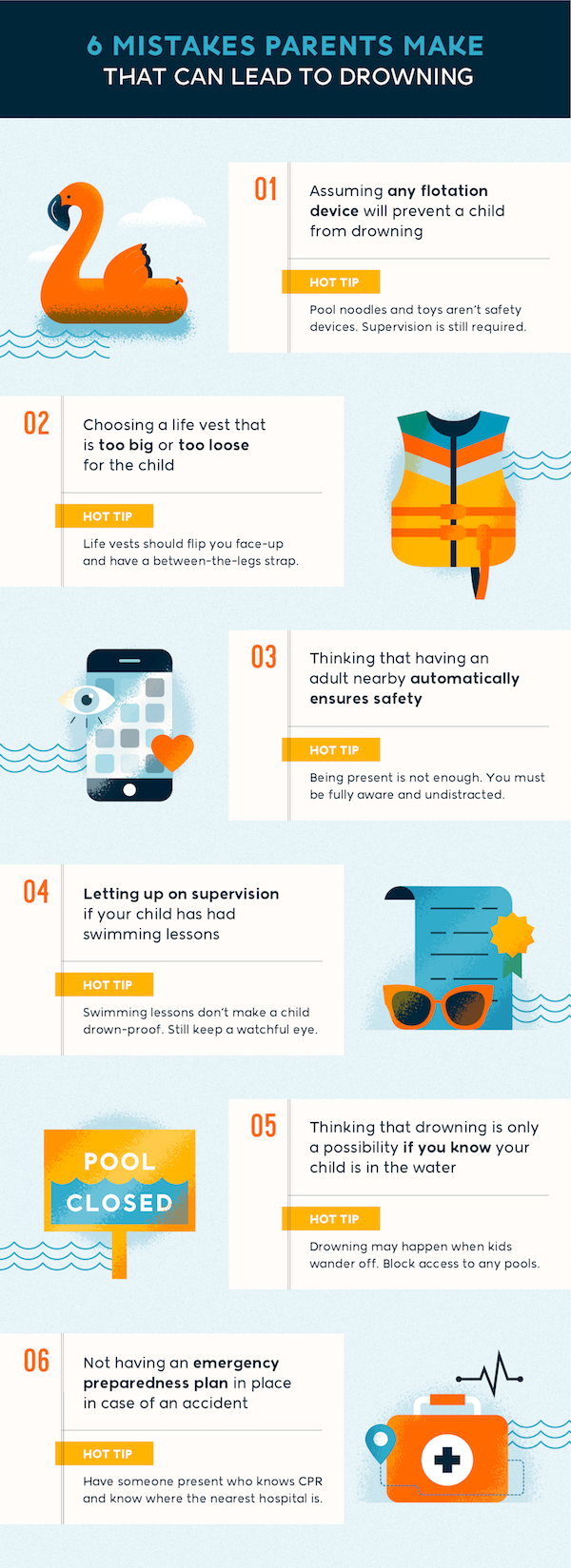
General Water Safety Tips
Whether you’re swimming, boating, surfing, snorkeling or just laying out, these safety tips cover all the remaining bases:
- Sunscreen is crucial in preventing sunburns and, ultimately, skin cancer. Look for an SPF of at least 30 and apply liberally every two hours. Reef safe sunscreen is the best way to protect us and our friends in the ocean.
- Hats with a wide rim provide an extra layer of UV protection for the face, neck and shoulders. Opt for one with a chin strap for hands-free wear on windy days.
- Water bottles should be kept handy at all times. By the time you’re thirsty, you’re likely already dehydrated.
- Shade is important to avoid overheating. Heatstroke, often accompanied by dehydration, is all too common in hot weather. Seek shade or go inside every few hours.
Adhering to some simple rules and continuing an ongoing discussion about safety precautions is all it takes to have a fun and safe time. Once you lay the foundation for safe habits, you and your family can start checking off items on your summer bucket list to make memories that last a lifetime.
Additional Water Safety Resources
Water safety education is an ongoing process. To learn more about how to keep you and your family safe, explore the following resources:
- PoolSafely.gov works nationwide to help reduce drowning and spread awareness.
- TheSwimGuide.org gives weather and water quality info for 7,000 beaches nationwide.
- RedCross.org can help find a CPR certification class near you.
- USASwimmingFoundation.org can help find swimming lessons near you.
- USCG.mil has more information about Coast Guard-approved life jackets.
Sources: International Life Saving Federation | National Center for Biotechnology Information | National Geographic | Florida Department of Environmental Protection | World Health Organization | Centers for Disease Control and Prevention

